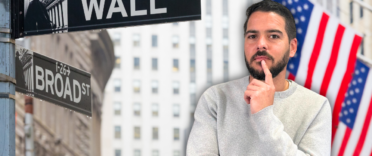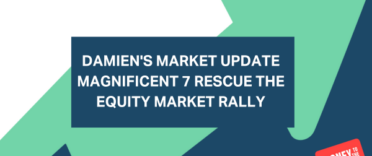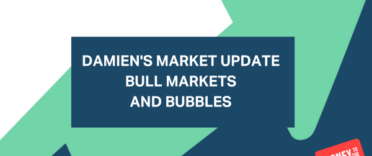The 132nd episode of my weekly YouTube show where I discuss what is happening in investment markets and what to look out for. This week I explain how the Fed may have helped to influence markets leading up to Christmas.
Each show lasts between 5-10 minutes and is aimed at DIY investors (including novices) seeking contemporary analysis to help them understand how investment markets work.
Subscribe to my YouTube channel to receive my weekly analysis of investment markets or alternatively, you can listen via my weekly Midweek Markets podcast below.
Midweek Markets weekly podcast
Other ways to watch, listen and subscribe
You can listen to other episodes and subscribe to the show by searching 'Money to the Masses' on Spotify or by using the following links:
Abridged transcript - Midweek Markets episode 132
Last week’s show was titled “It's starting to feel a lot like Christmas in equity markets” and it was a nod to how equity markets appeared to be turning a corner and investor risk appetite increasing.
We experienced an incredible 3 day rally last week with many equity markets pushing back towards new-all time highs, or at least recent highs. Bond yields were muted and the mood was generally one of “risk-on”. The catalyst was up for debate.
But after such a strong rally perhaps it was to be expected that some of the steam would be let out of equity markets. Broadly, most major equity markets fell around 2% at the start of this week. That was largely because there were major hurdles to overcome in the form of central bank policy decisions on Wednesday and Thursday. Central banks globally announced their latest policy decision, most of them doing so today (which was therefore dubbed Super Thursday). As is often the case, most attention was directed towards the European Central Bank (the ECB), the US Federal Reserve and the Bank of England.
In recent months December’s meetings were certainly seen as live meetings for the Fed and the Bank of England - and that means there was the expectation for tightening of monetary policy on both sides of the pond. In the case of the Bank of England, the market had been betting on a modest interest rate rise from 0.1 to 0.25% - the first rate rise since the pandemic began. But if you’ve been watching these shows then you will know that Omicron muddied the waters, posing a significant threat to economic growth. Indeed even some of the more hawkish members of the Bank of England’s Monetary Policy Committee (MPC) had gone on record in recent weeks to say it may be prudent to take a wait-and-see approach with regard to interest rate rises given the lack of understanding of Omicron and its potential impacts.
Even the Fed had been deemed to be taking a more dovish tilt in recent months despite soaring inflation. So there was much uncertainty heading into this week about what key central banks would do and there was always the potential for them to pull the rug from under investors' feet. The consensus view seemed to veer more towards the Fed and the Bank of England being more dovish, than previously expected. But then by midweek new data in the US showed inflation had hit 6.8% which is a 39 year high. Hot on the heels of that data, it was announced that UK inflation had soared to 5.1%, a 10 year high. The data piled the pressure on central banks to take action.
In the end both the US and the UK did indeed take action. Firstly the US Federal Reserve doubled the rate at which it is tapering its QE programme, reducing the level of support it provides for the US economy. And while it did not choose to raise interest rates it did suggest that there would be three interest rates rises in 2022. This announcement was made on Wednesday after European equity markets had closed. You may think that markets would have reacted negatively to such a hawkish turn, indeed some suggested that Jerome Powell had waited until he secured another term in office before turning the screws on the US economy. But you’d be wrong, in fact US equity markets exploded to the upside. A hawkish decision was paired with a more dovish press conference from Powell, but equity markets hastily rewrote the investing narrative regardless. The Fed’s decision to not be in a rush to raise interest rates was seen as positive, while the general tightening of monetary policy was seen as a sign that the US economy was on a strong footing.
US equity markets exploded higher with the S&P 500 finishing up 1.63% on the day, while the tech-heavy Nasdaq 100 rallied an amazing 2.35%. It is a perfect lesson in why trying to second guess what central banks will do and how the market will react is foolhardy. Perhaps, the market was just happy that there were no more surprises from the Fed.
The euphoria was seen in equity markets globally today, with the FTSE 100 up 1.4% while Euopeans stocks are up broadly around 1% to 1.2%. This is despite the market being largely caught off-guard by the Bank of England then raising interest rates from 0.1% to 0.25%. But again, the hawkish tone didn't rattle equity markets. The pound rallied almost 0.5% against the dollar and the euro (the ECB didn’t pull any surprises) while gilts fell in value as investors dumped them in favour of equities. Don’t forget that a rising interest rate environment makes bonds less attractive.
While we are all concerned about Omicron spoiling the party as we head into the festive season, it would appear that the Fed and the Bank of England are not. Assuming the market doesn’t give up its gains of the last 24 hours, has Powell and co given the green light to the end of year Santa rally to get underway?
As I pointed out to 80-20 Investors last week, that sometimes it pays to almost keep it simple, and forget the ever changing and contradictory narratives that investment markets conjure up. Based on history there's still a 74% chance of a positive December (Santa rally) in US equities and an 86% chance in UK stocks. It doesn't guarantee it will happen, but from a numbers point of view, the odds remain favourable even if the market experiences another wobble.



